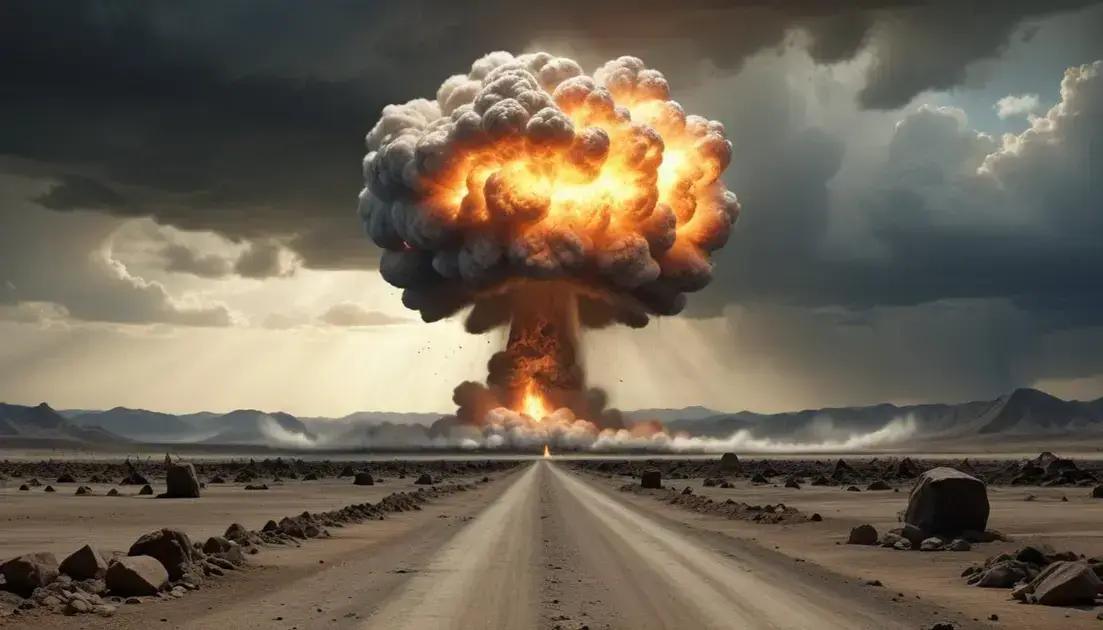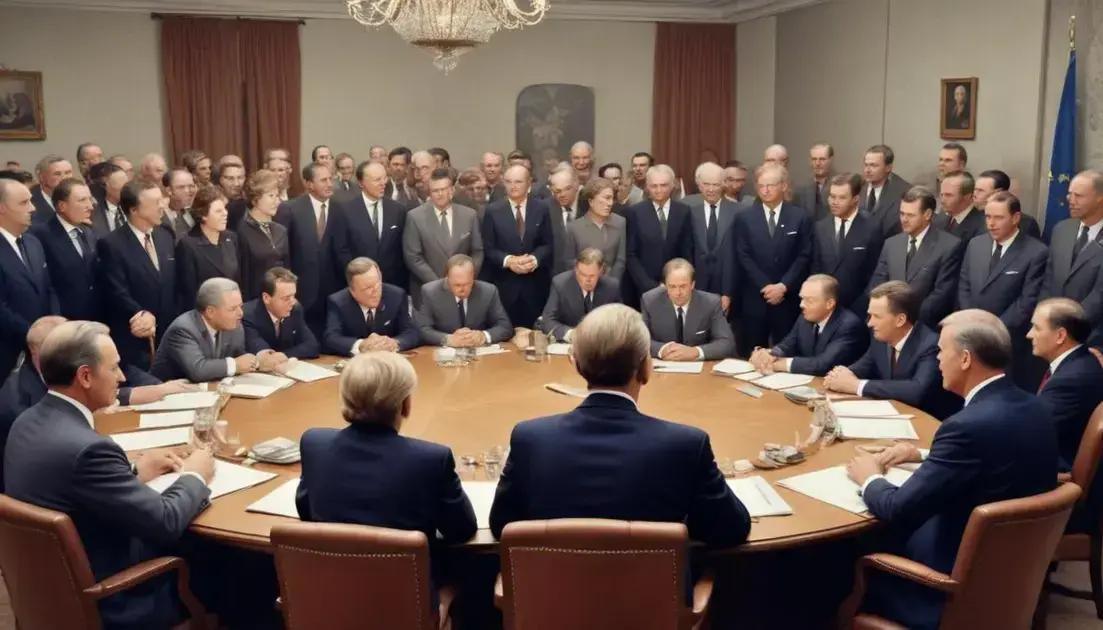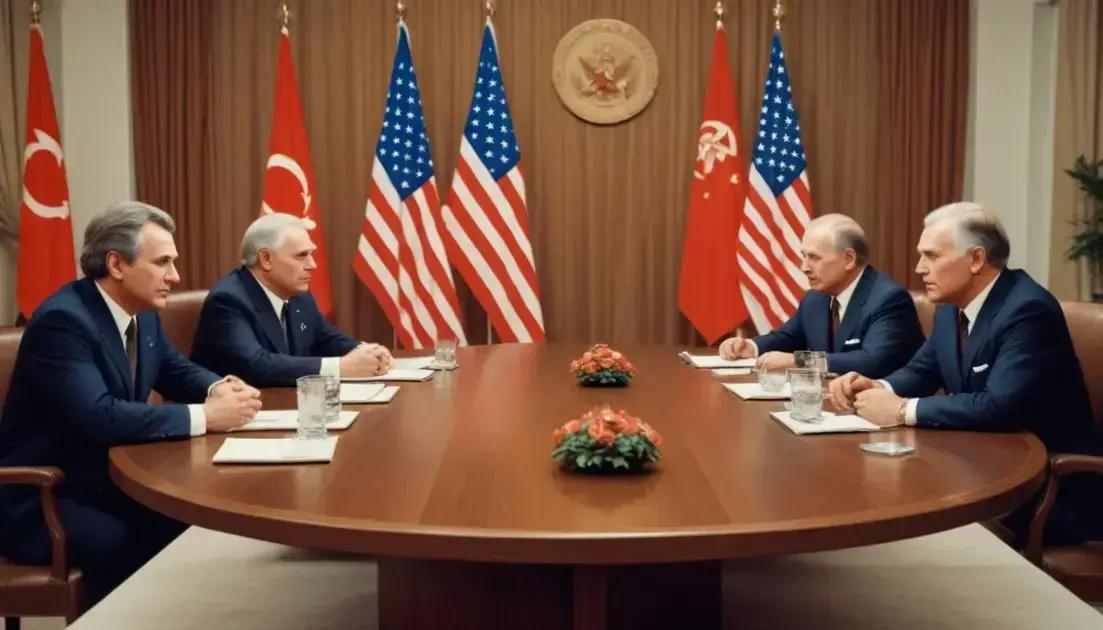
H-Bomb: The Peak of Human Destructive Power
The H-Bomb marks a significant leap in nuclear weapon technology, emphasizing the concept of mutually assured destruction in global politics. This powerful weapon not only heightens fear but has profound effects on cultural perceptions and international diplomacy. As nations navigate the complexities of nuclear warfare, advancements in technology and the need for strategic dialogue become essential to ensure peace and security worldwide.
Nuclear Weapons have changed the game when it comes to global power dynamics and fear. Let’s explore their impact, shall we?
Introduction to the H-Bomb
The H-Bomb, or hydrogen bomb, is a nuclear weapon that uses fusion to produce a massive explosion. It’s much more powerful than older bombs. This type of weapon relies on the fusion of hydrogen isotopes to create energy. The result? A blast that is far more destructive than anything we’ve seen before.
First tested in 1952, the H-Bomb was a game changer. Its immense power raised the stakes in international military politics. Countries around the world rushed to develop their own hydrogen bombs.
How It Works: The H-Bomb uses a two-stage process. First, a fission bomb detonates. This creates the heat and pressure needed for the fusion reaction. The fusion then occurs when hydrogen isotopes combine, unleashing enormous energy.
This bomb is not just about brute force; it reshapes our understanding of warfare. The threat of such power brings nations to the negotiation table. The idea of mutually assured destruction has changed how countries strategize.
With the potential to obliterate entire cities, the H-Bomb fuels global fear. It reminds us of the heavy responsibility each nation carries. We must see the importance of diplomacy and disarmament in today’s world.
The legacy of the H-Bomb continues. It influences global politics and pushes the boundary of scientific advances. Understanding its impact is essential as we look to the future.
The Concept of Mutually Assured Destruction
The Concept of Mutually Assured Destruction, often called MAD, is a key idea in nuclear strategy. It suggests that if two opposing sides have nuclear weapons, neither will attack the other. Why? Because both would face total destruction.
This idea came during the Cold War. The United States and the Soviet Union both built large arsenals of nuclear weapons. Each side knew that an attack would mean both countries would suffer hugely.
At its core, MAD relies on rational thinking. If leaders believe they can be destroyed, they are less likely to start a fight. This idea has kept the peace between major powers for decades.
However, this strategy is not without risks. Accidental launches or misunderstandings could trigger a nuclear war. Even small miscalculations can lead to severe consequences.
The fear of total annihilation shapes policies today. Nations continue to invest in defense systems but also talk about arms control. They aim to reduce the number of weapons while promoting trust among countries.
In popular culture, MAD is often referenced in movies and books. These stories explore the tension and fear about nuclear warfare. They reflect society’s concern over the devastating power of nuclear weapons.
Impact on Global Politics
The Impact on Global Politics from nuclear weapons is huge. Nations must consider each other’s arsenals in their decisions. This often leads to careful strategy and diplomacy.
Nuclear weapons make the stakes very high. Countries can’t act alone; they think about how others will react. The fear of a nuclear war keeps many nations from engaging in direct conflict.
During the Cold War, for example, tensions ran high between the U.S. and the Soviet Union. Each side built up their nuclear stockpiles. But instead of fighting, they negotiated to avoid mutual destruction.
Today, smaller nations are also joining the nuclear club. This can upset the balance of power. Countries like North Korea have created uncertainty in international relations.
Using nuclear weapons as a deterrent changes alliances. Nations may team up to protect each other against threats. This can lead to new treaties and agreements to limit arms.
The political landscape is always shifting. With each new development in nuclear technology, countries must adapt. The challenge is to ensure safety and peace among nations.
In the end, understanding how nuclear weapons affect global politics is critical. It helps us grasp the importance of dialogue and compromise in a world filled with uncertainty.
Cultural Reflections on Nuclear Weapons
Cultural reflections on nuclear weapons are everywhere today. Movies, books, and art explore their impact on society. These works often highlight the fear and consequences of using such destructive power.
Films like Dr. Strangelove and Threads show how people cope with the threat of nuclear war. They mix dark humor and chilling scenarios, making audiences think deeply about the consequences.
Books and literature also tackle nuclear themes. Authors like Kurt Vonnegut and Walter M. Miller Jr. depict dystopian worlds shaped by nuclear fallout. Their stories resonate, tapping into our fears over survival and humanity.
In art, many pieces express the devastation caused by nuclear weapons. Artists use powerful images to show the scars left on landscapes and people. These visual cues prompt public discussions about peace and disarmament.
Music, too, reflects the anxiety tied to nuclear power. Songs like 99 Red Balloons address the fear of conflict escalating into catastrophe. This infusion of culture into the conversation reminds us of the human experience behind the politics.
Through these cultural lenses, we gain a better understanding of the emotional stress nuclear weapons create. They remind us that beyond the politics, there’s a real human impact. This connection drives conversations around arms control and peace efforts.
Future of Nuclear Warfare
The Future of Nuclear Warfare raises many questions. As technology evolves, the stakes seem higher. Nations are developing new strategies to stay ahead while maintaining security.
One major concern is the rise of hypersonic weapons. These weapons can travel faster than sound, making them hard to detect. This speed changes the way countries prepare for potential attacks.
Another factor is cyber warfare. Nations may target each other’s nuclear systems digitally. A simple hack could disrupt communication or launch systems, leading to chaos.
International treaties play a crucial role in shaping the future of nuclear arms. Treaties like the Nuclear Non-Proliferation Treaty (NPT) help limit the spread of nuclear weapons. Yet, many countries still work on improving their arsenals.
Public opinion is also shifting. Many people are now calling for disarmament and stricter controls. They fear that without proper checks, nuclear technology might fall into the wrong hands.
Finally, as climate change poses threats, some argue for reallocating resources. Investments in nuclear arsenals may compete with solutions for global warming. Striking a balance will be vital for future generations.
Nuclear warfare is changing. As new challenges arise, nations must adapt to ensure safety and peace in a complex world.
Conclusion
In conclusion, the discussions around nuclear weapons and their impact are crucial. The H-Bomb represents the peak of destructive power, shaping global politics and culture. As we explore the implications of mutually assured destruction, we must also consider the ongoing cultural reflections that highlight our fears.
The future of nuclear warfare brings new challenges, like advances in technology and the ever-present threat of cyber warfare. It’s vital for nations to engage in open dialogue about disarmament and peace. Understanding the consequences of these weapons can lead to safer international relations.
Ultimately, we must strive for a world where diplomacy prevails over destruction, ensuring that the horrors of nuclear warfare remain a thing of the past. By focusing on these efforts, we can work toward a more peaceful and secure future for all.


